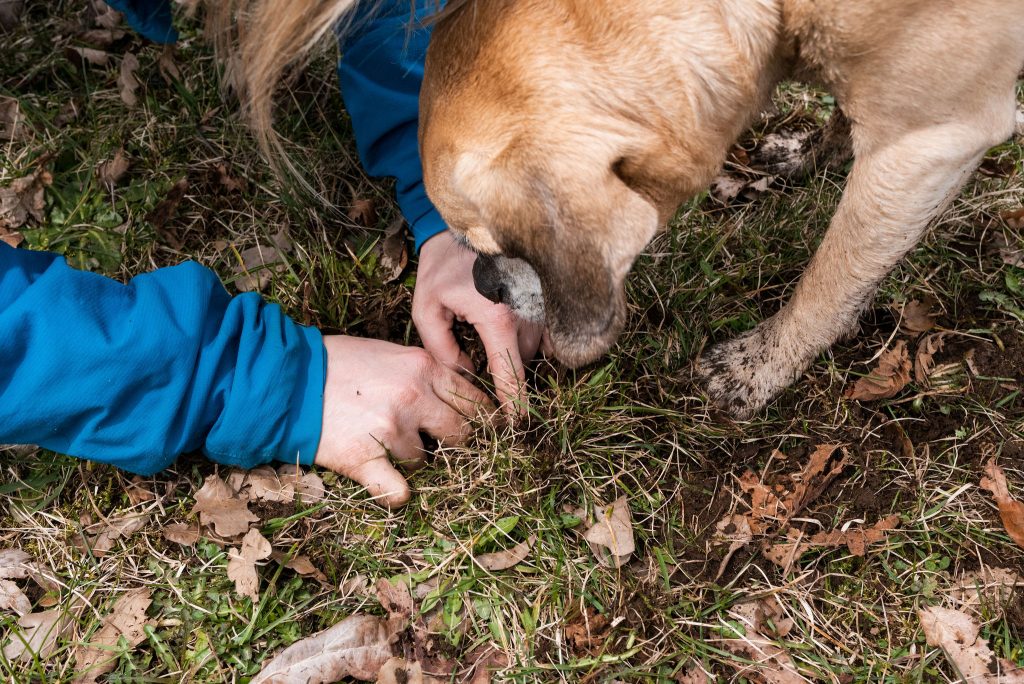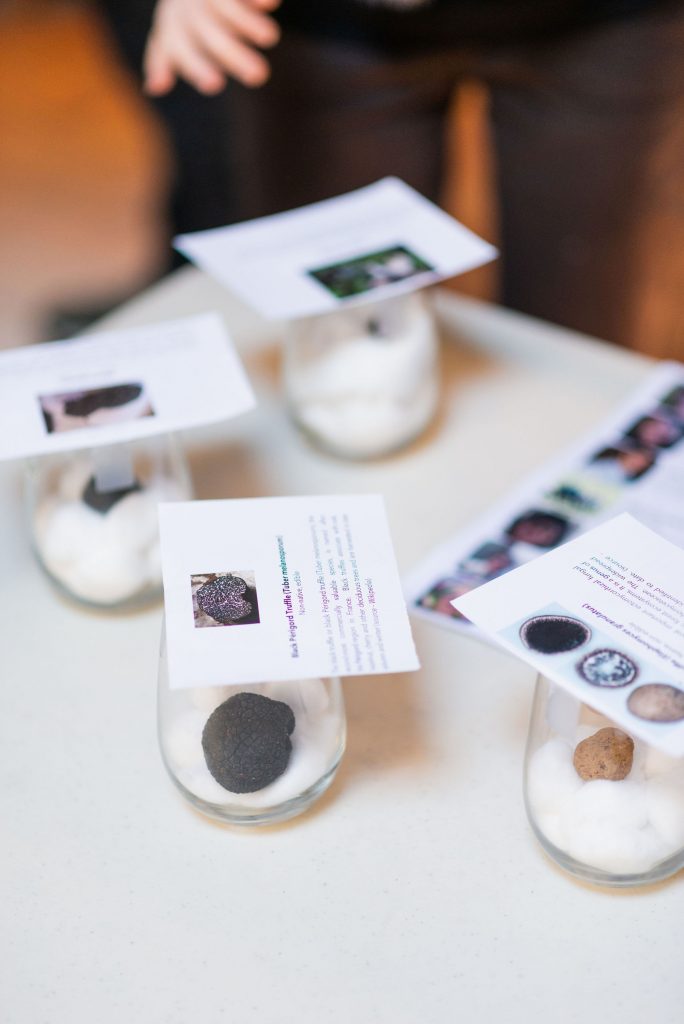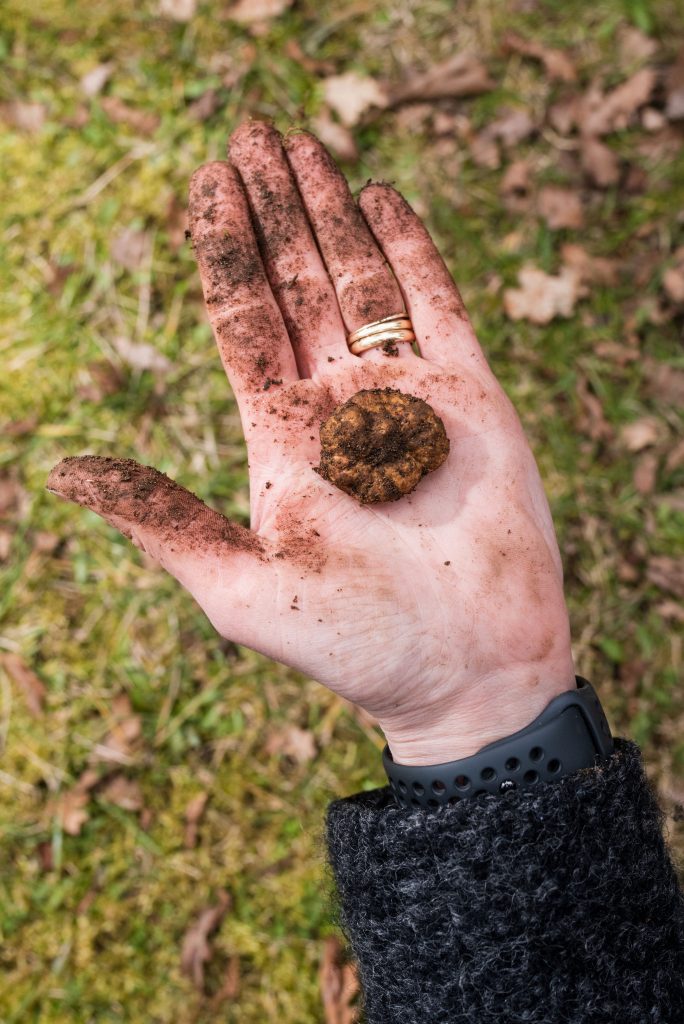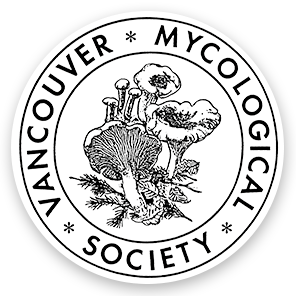
Dexter discovers a treasure
When you are out foraging for mushrooms, could the real treasures be underground? The folks at the Truffle Association of BC say it’s possible. The allure of truffles is well known, with prices as much as $6,000/Kg for the most expensive type, the Italian White Truffle, Tuber magnatum. Finding them, though, is another story.
What is a truffle?
If you don’t know much about truffles, here are the Coles notes: Truffles are essentially a mushroom that fruits underground. With most fungi, the vegetative body of the organism lives underground all year, and only in fruiting season will it send up a reproductive structure that we know as a mushroom. But with truffles, the fruiting body never breaks the surface. In the absence of wind current, truffles have evolved to have animals disperse their spores. Truffles release an attractive scent that mimics the sex hormones of pigs, which allows them to sniff out, dig up, and eat the truffles, dispersing the spores elsewhere in their stools.
You may be thinking, “I like the smell of truffles, does that mean I like the smell of pig sex hormones?” Try not to read into it. Shannon Berch, the lead researcher for TABC, advised that to her knowledge there are no poisonous truffles, due to the fact that they rely on animals consuming them to propagate. Humans could, hypothetically, also be vectors of spore dispersal (I asked).

Wild and cultivated truffle samples
BC Truffle Festival
On Saturday February 29th, the BC Truffle Festival held an event at the UBC Farm, located on the unceded lands of the Squamish, Tseil-Watuth, and Musqueam First Nations. It was a crisp sunny day, and about 40 truffle enthusiasts gathered in a rustic yurt just a few minute’s walk from UBC’s Truffiére (Truff-ee-AIR). In attendance were experts in every aspect of trufflemania you could think of: science, cultivation, culinary preparation, and of course, two adorable truffle dogs and their dedicated owners.
For something as secretive as truffles, the members of TABC were extremely generous with their information. The society actively encourages people to start cultivating truffles. However, as Sharmin Gamiet, truffle and mushroom cultivation consultant, puts it, “Growing Truffles is not for the faint of heart.” In her presentation, we learned it takes about seven years of planning, soil pH adjustment, and roughly a $35,000 investment before you see a truffle, if you’re lucky. The UBC Farm Truffiére was established with oak trees inoculated with Perigord truffle spawn in 2013 and is ripe to start producing truffles. Sadly, when we went out with the dogs, despite it being peak truffle season, there were none to be found. My fingers are crossed for next year.
BC’s Truffle Industry
“We are trying to create an industry,” Doug Campbell, TABC volunteer and manager of the UBC Farm Truffière, told me after the event. Both wild truffle hunting and truffle cultivation are relatively new industries to BC. With Europe’s truffle industry in decline due to climate change and deforestation, there is an opportunity to meet the growing global demand for truffles. There are only a handful of producing truffiéres in Canada, with Southern BC being one of Canada’s few suitable growing regions. Varieties in cultivation in BC include Bianchetto (Tuber borchii) and Perigord (Tuber melanosporum).
However, no species is off the table (pun intended). Since BC’s Truffle Industry is still emerging, it is an exciting new frontier for farmers and researchers to experiment and hopefully discover new techniques to grow previously uncultivated species. This is exactly what happened at ArborInnov Inc. in Sherbrooke, Quebec. Thanks to years of research and development in plant-fungi symbiosis (mychorrizae), they successfully cultivated the Apalachian Truffle (Tuber canaliculatum) in 2016. You can learn more about their work at arborinnov.com.

A bianchetto truffle grown in Langley, BC
BC’s Native Truffles
So you don’t have seven years to wait? You could still be in luck. To my delight, I learned that BC has dozens of native truffle species, and more are being discovered all the time. There are two main types of culinary truffle native to Southern BC: Oregon Black Truffles (Leucangium carthusianum), and Oregon White Truffles (actually two species that are only distinguishable by their harvest season: Tuber gibbosum, and Tuber oreganese). A trained truffle dog can sniff them out no problem. Brooke Page, truffle dog owner and trainer, told us, “The challenge with training is not teaching your dog to find truffles. They already know how to do that. The trick is teaching them to communicate to you where they are.” Any dog can be trained to hunt for truffles, but certain breeds, namely Lagotto Romagnolo, naturally excel at it. Your best bet is to start in a Douglas fir forest, in a valley, typically with trees younger than 50 (old growth is not necessary unlike other types of mushrooms). Both varieties can cost between $800-1800/Kg.
So with all the hard work and chance involved, why bother? To me, it’s like any other investment: the risk is high, but the potential return is worth it. The unique, revered flavour and rarity combined with a high price tag make truffle farming and hunting particularly attractive to those looking for the next gold rush.
The Truffle Association of British Columbia is a society dedicated to supporting BC’s truffle industry by providing information, upholding quality standards, and ensuring a consistent supply of truffles for years to come. If you are interested in learning more, visit bctruffles.ca. A special thank you to them for informing this article and providing photos from the event by Luke Mikler Photography lukemiklerphoto.com.
